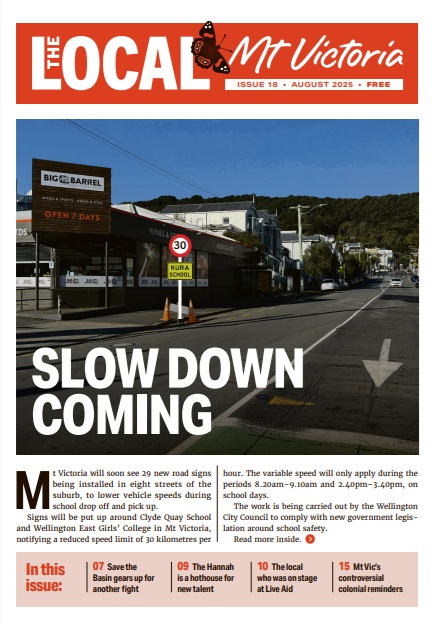
It’s time to bid haere ra to rats in Mt Victoria.
The suburb is next on the list for Predator Free Wellington, the team on a mission to make Wellington the first predator free capital city.
With the Miramar peninsula declared predator free in November last year, efforts are now turning to Hataitai, Roseneath, Oriental Bay and Mt Victoria as phase 2 of the overall project.
 The team from Predator Free Wellington will soon be on the streets of Matairangi, installing bait stations and traps on the properties of participating residents, then checking and removing rodents.
The team from Predator Free Wellington will soon be on the streets of Matairangi, installing bait stations and traps on the properties of participating residents, then checking and removing rodents.
Residents can offer to have a trap or bait station on their property. There’s no cost, and you don’t have to do anything. The team will come by to check and empty the traps from time to time.
This serviced work is supplemented by other hands-on volunteer trapping groups.
Predator Free Mt Vic are volunteer backyard trappers covering the Mt Victoria, Hataitai, Roseneath and Oriental Bay areas, and Mt Vic Vermin Trappers is the group that operates in the town belt.
“There are some awesome community trappers around Hataitai and Mt Vic – it’s a really active group; we’re really fortunate,” says Eleanor Dewar, the programme manager for Predator Free Wellington.
Dewar says Predator Free Wellington has learned a lot from their experience on the Miramar Peninusula.
“When we first started, the techniques we were using were rudimentary.”
Since then, they’ve learned rats will flourish in steep bush areas with lots of food sources, whereas a flat urban area will have a smaller rat population.
“Habitat is a massive indicator. So rather than putting a trap or bait station every 50 metres and hoping for the best, we say ok, in this area we’re going to need more devices and a higher intensity because there’s more rats.”
They also found out more about the behaviour of the two rat species they are targeting.
“Ship rats like to climb trees, so we have to adapt to target them where they live. Norway rats are much more likely to burrow.”
Once eliminated, the programme then turns to monitoring, through a variety of tracking devices to spot any incursions. Data collection and analysis is a huge part of the programme, allowing the team to constantly improve their techniques.
“Our goal now that we’re got this proof of concept and know how to do this, we’re looking at how we can increase our efficiencies , and make it more viable and how it can be replicated in other cities around the country.”
One of the big benefits of a successful programme is of course increasing bird life, along with other kinds of biodiversity such as lizards.
“In Miramar we’ve had a 71% increase in native bird detections since the project began.”
And rats are no longer around to gnaw wires and other infrastructure.
“It’s amazing to think that on Miramar Peninsula now, if you’re living there, you don’t have any rats; it’s not something you have to deal with any more.”
More information about phase 2 is available on the Predator Free Wellington website.



